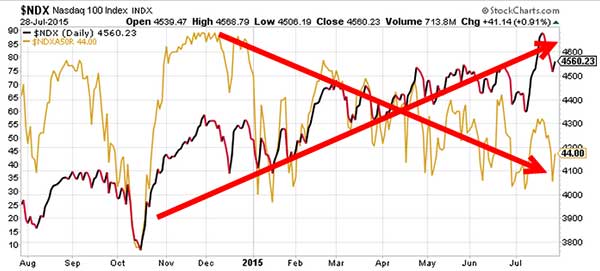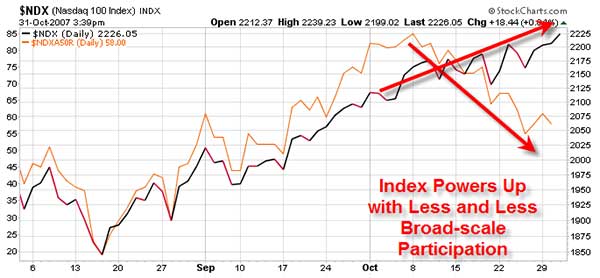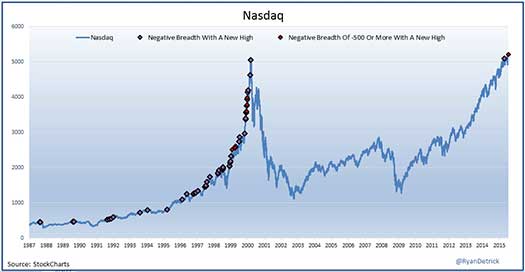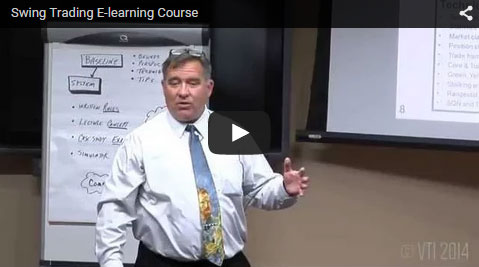Tharp's Thoughts Weekly Newsletter
-
Article: Is There a Genius Trading State? by Van K. Tharp, Ph.D.
-
Workshops: Forex Coming Soon to Berlin, Germany!
-
Tip: Market Breadth Really Stinks – When Will it Finally Matter? by D. R. Barton, Jr.
-
$700 Early Registration Discount Expires Tomorrow!
(Extended one day because today's notice is going out late in the day.)
Attending Peak Performance 101 is the absolute best choice
for students who want to become masterful traders.

Q: I am already a profitable trader. Why should I consider attending this workshop?
A: A coach finds talented players, teaches them the fundamentals of the craft and then makes sure that they follow the fundamentals. As a profitable trader, you know that any extra edge you can get will make you that much more profitable. One of the most successful traders in the world pays over a million dollars each year for personal coaching. He does that because he wants every possible edge. If you are a profitable trader, you probably should be thinking along the same lines.
Q: I am new to trading. As a beginner, wouldn’t I be better off trying to learn more about trading techniques first?
A: Quite the contrary. As a beginner, you need the information this workshop provides first. Most people make the mistake of looking for trading techniques right away without first working on themselves. When you do that, you end up making thousands of mistakes. If this is the first trading course you ever take, it will be the best thing you can do for yourself.
Dr. Tharp guarantees that you will be delighted with this workshop. In fact, we're prepared to take all of the risk ourselves! If you aren't totally satisfied by 12 PM on the second day of the course, we'll give you a full refund. Why are we willing to assume your risk? The key to our guarantee is this: If you are ready to work on yourself, there is ultimately no risk to us. We know you'll be delighted. Click this link to learn more...
Feature Article

What is Genius?
Is There a Genius Trading State?
by Van K. Tharp, Ph.D.
View on-line to resolve formatting problems
Think about what Sir John Templeton did in 1999 at the heart of the dot.com stock bubble. He took his entire personal fortune and shorted various dot.com stocks. At the time, that behavior might have sounded insane. After all, those stocks could move 10% each day in that period … and usually the big move days were to the upside. But John Templeton shorted and stayed with those shorts through the dot.com crash. You might consider that to be a stroke of genius.
Let’s consider what John Paulson did in 2007. He concluded that home prices had gone up over 7% per year for the last five years and would have to drop by 40% just to return to their historic trend line. He also noted that when housing prices dropped, they usually went through the trend line. What did he do? He basically made a bet that the housing market would collapse and invested almost everything in his company on cheap credit default swaps—which would rise in value if housing collapsed. He also bet against CDOs (collateralized debt obligations) by buying insurance against them. His fund took about a $5 billion position in these two categories of instruments. John Paulson’s firm made nearly $15 billion in 2007 and his personal cut was about $4 billion. Was this also financial genius?
And what about Ed Seykota in the 1960s? Ed understood basic trend following principles but he also understood position sizing strategies. In addition, Ed was one of the first automated trend followers. I was at his house in the early 1990s where all of his systems were computerized and written in assembly language. You might say that Ed was the first computerized trend follower who truly understood the power of position sizing strategies just as the inflationary trends in commodities took off. I was told that Ed opened a number of $5,000 positions in the futures market — losing them all until eventually he caught a trend. After that, he had an edge that few others have ever had and his returns are legendary. Was he lucky or a genius?
There are many more such examples in the history of the financial market. Did these people have something special? Were they financial geniuses?
Many years back, I was lucky enough to attend a rather famous NLP workshop that was only given once by Robert Dilts and John Grinder. Robert took the position that mental strategies were the key to everything while John took the position that states were the key to everything. Later, Robert wrote three books entitled strategies of genius in which he profiled the thinking processes of Walt Disney, Albert Einstein, Leonardo DaVinci, Nikola Tesla, Sigmund Freud, Aristotle, Mozart, and even the fictional character Sherlock Holmes. I’ve read all three books several times and watched Dilts’ video series, Strategies of Genius. Dilts basically said that a lot of these people’s genius was a function of how rich their internal maps of reality were. Remember that NLP adopted Alfred Korzybski’s famous postulate that says “the map is not the territory.” In other words, we have no idea what reality is. Instead, we just have a map of reality. Dilts basically says that the richer the internal map that a person has, the more likely such a person is to be a genius.
Let me share with you a few of Dilts’ conclusions from his books about how genius’s maps become so rich and about their strategies in general: (view list on-line)
1) Geniuses have very strong visualization skills, perhaps even photographic memories.
2) Everyone has five sensory modes but geniuses have developed numerous links between their various sense modes.
3) Geniuses appreciate that there are an infinite number of perspectives. For example, a politician might wonder how different people would interpret his stance on a particular topic. He might consider his stance on the topic from the perspective of a farmer, a blue collar worker, a small business own, a billion dollar company CEO and a mother. Geniuses are great and shifting between multiple perspectives.
4) Similarly, there are three core perceptual positions:
(a) your perspective);
(b) the other person’s perspective; and
(c) and an observer’s perspective.
Geniuses can easily switch between perceptual positions between an associated perspective (1st person) to a dissociated perspective (2nd position) to an observer perspective (3rd position).
5) Geniuses can easily move from the big picture to extreme detail and all along the spectrum between in various degrees (or “chunk size” in NLP terms). They can also perceive different logical levels such as spiritual vs. environmental.
6) Geniuses can easily maintain a feedback loop between the abstract and the concrete (i.e., sensory specific detail).
7) Disney’s classic creative strategy involved moving between different personalities: the dreamer, the realist and the critic. Most geniuses do something like this.
8) A genius will ask many basic questions. They emphasize questions over answers being bold in their questions and humble about their answers.
9) A genius can easily use metaphors and analogies as ways of thinking.
10) And most importantly, geniuses all seem to have a mission beyond their individual identity.
I could spend a lot of time and words explaining each of these aspects of genius but I can distill all of Dilts’ conclusions down to his main point – genius is based on mental strategies. Mental strategies focus on the structure of our thinking. (If you want to learn more about mental strategies and their application to trading, review Volume V of the Peak Performance Course or consider attending my newest workshop, Peak 204, Modeling Great Traders through Mental Strategies).
For all of the value of understanding mental strategies, there is another approach to genius — via mental states or genius states. In the Dilts and Grinder workshop I mentioned, John Grinder basically said that genius was all about states. Since Grinder’s original work in the area, Dr. Michael Hall has really become the champion of mental states and he won a prize in the early 1990s for the most innovative NLP technique - the introduction of metastates.
Metastates are states “on top of” or “about” your primary state. Here’s a simple example of a metastate. First, you start with a primary state - you respond to the external environment with your primary states. Fear is a primary state. With that primary state, you then bring in another state (i.e. being mad about being scared) which is known as a metastate. In other words, you use another state to “texture” the primary state. Metastates change everything.
Here’s a short exercise to experience a metastate. Remember a time when you felt fearful and notice what that was like, feel the feeling of fear for a moment. Then welcome that fear. You can even open your arms in welcoming the fear. What’s it like welcoming fear? This is actually a Sedona Method feeling release process. In the process, you bring a metastate of welcoming to whatever primary state you are in.
You could also do something similar with a metastate of acceptance. This might sound like, “Oh, I notice that I have some fear and I accept that. Well, that’s simply what I am experiencing and I accept the feeling of being scared right now.”
Those are two useful ways to metastate but what if you reacted differently to your fear? Suppose you said, “I don’t ever want to feel scared again. But what if I do and feel even more scared than I do now? What will happen then?” This brings fear or worry as a metastate about your fear. And what does that do? It makes the initial fear much worse.
You could also get angry at the fact that you got fearful saying something like, “I’m tough. Tough people should never feel scared and I’m really angry that I got afraid.” Would that help or make the primary state worse?
Are you beginning to get the idea of meta-stating? Dr. Hall has invented hundreds of new NLP patterns that all involve some form of meta-stating— including ones used by geniuses. Genius comes in when you incorporate states like optimism, resilience, self-efficacy, self-esteem, developing your personal power, the ability to find value and opportunity and take advance of it, etc.
Dr. Hall has written numerous books or manuals with “Genius” in the title and they include:
• Accessing Personal Genius
• Living Genius
• Writing Genius
• Wealth Genius
Most genius states come from meta-stating where you texture one state with another. For example, you might have a focused state which you texture with extreme pleasure. Imagine what that would be like.
Let’s apply this approach to reading. What if you could get into a focused state that promoted a very high retention for information that was textured with extreme enjoyment? That might be a genius reading state. In addition, suppose that you could add any other resourceful state you might want (such as being able to truly get the essence of the material) in order to make the metastate more valuable to you. Actually, incorporating dozens of additional states might make your reading amazingly powerful. Not only would that be a genius state (a metastate really) for reading ... but your combination of states would be unique for you.
Now let's add to that metastate one more capability — the ability to step into it and out of it at will. Say you are on a crowded train but you have some time so you step into the genius reading state and read for 20 minutes. You may have enough 20 minute periods like that to be able to read 3 hours each day. Does that sound hard or boring perhaps? Remember, however, that you also textured the state with extreme pleasure so while you are very focused in your reading genius state, you are also experiencing intense pleasure.
What if someone were to disrupt your reading by asking you a question? You can immediately step out of your state and be present with that person. And then when you have time, just step back into the state again and read. That's a flavor for reading genius.
Certainly, there is something to be said for Dr. Hall’s genius states. He uses them himself quite successfully. One of Dr. Hall’s goals was to be a prolific writer but he found it very difficult to write anywhere near as much material as he wanted. He created a genius state for writing and applied it to himself - which he can step into and out of at any time. The net result? Now each year, he writes three books, 52 articles and usually 3-4 new workshop manuals - so the production volume is there. Besides his writing, he also reads three books each week – and he isn’t speed reading. He takes notes on each book and indexes all of his notes. As a result, Dr. Hall has developed a tremendous knowledge base inside his head.
Before I talk about a trading genius state, let me ask you a question. What would be the primary state you would want for great trading? Then with what other states would you want to texture that primary state? If you know, then you are not far away from that aspect of trading genius. Email your ideas for a trading genius state to me(van “at” vantharp.com). If enough people reply, I’ll design the next article in this series around the responses I get.
So is genius a mental state or a way of thinking? Well, I suspect that it’s both. Stay tuned as we’ll continue to explore these topics in some detail.
About the Author: Trading coach and author Van K. Tharp, Ph.D. is widely recognized for his best-selling books and outstanding Peak Performance Home Study Program—a highly regarded classic that is suitable for all levels of traders and investors. You can learn more about Van Tharp at www.vantharp.com. His new book, Trading Beyond The Matrix, is available now at matrix.vantharp.com.
Interested in the Super Trader Program?
Apply before August 31st to get the current rates.
Recently, Dr. Tharp announced a price increase that will soon affect new students entering the Super Trader Program. You still have time to apply and be accepted into the program at the current rates!
There is one final opportunity to attend a qualifying workshop and be considered for the program before the price increase. If you haven't yet done so, consider enrolling in Peak Performance 101 in August! Several slots have already been spoken for with new applicants joining the program in the last two months. Be sure to act swiftly to be considered for one of the few remaining openings in the program.
Click here to read more and to confirm the deadline for current pricing.
Workshops
Combo Discounts available for all back-to-back workshops!
See our workshop page for details.
Trading Tip 
Market Breadth Really Stinks – When Will it Finally Matter?
by D. R. Barton, Jr.
View on-line to resolve formatting problems
U.S. stock indexes refuse to leave the “top of the page”. While the Dow Industrials and especially the Russell 2000 are lagging a bit, both the S&P 500 and notably the Nasdaq 100 made new all-time highs less than two weeks ago.
And while there has been joy on the financial news channels, many analysts are less than joyful about this market. They portend the end of the bull market due to the lack of broad participation. On Friday, July 17 in particular, the S&P and Nasdaq had big up days but those rises came with some disturbing statistics:
• The S&P 500 had more losing stocks than winning stocks,
• The New York Stock Exchange breadth (# winners - #losers) was negative, and,
• While the Nasdaq made a new all-time high, more stocks hit 52 week LOWS than hit 52 week highs!
Some other key breadth/participation figures have been flashing warning signs as well. Let’s dig into a few of these signals and see if it’s time to start lightening the equity holdings in our portfolio.
The Scariest Ones First
Before we look at breadth numbers from the bulleted list above, let’s just jump to the scariest indicator first. Here’s a chart that shows Nasdaq 100 closing prices compared to the percentage of symbols in that index that are trading above their 50 day moving averages:

View Larger
The black and red line shows the Nasdaq closes (scale on the right side) while the gold line shows the percent of stocks in the index trading above their 50 day moving averages.
As the bold red arrows in that chart show, the Nasdaq has been pushing higher while the number of stocks trading above the key intermediate-term moving average has been trending lower. This shows weaker broad participation at the new highs – fewer stocks are driving the index.
And now for something really disturbing...
On October 31, 2007 I published an article in this same space cautioning readers about the exact same breadth divergence. Notice that I even replicated the color scheme in the chart above so that you can see the similarities:

View Larger
Later that very same day(!), the Nasdaq made the new high which was then followed by a 54.5% decline.
But before you get your undies in a bundle, there really are some things that are different this time.
Let’s look at why the breadth stats from the all-time aren’t that disturbing, and can be pretty easily explained away by a one-time event – Google’s second biggest up day in its history.
New Nasdaq Highs with Negative Breadth – Actually, Not That Rare
As I mentioned, the Nasdaq made a new all-time high not two weeks back on Friday July 17th. The Nasdaq Composite (a much broader index than the Nasdaq 100) also made a new high, with 500 more losing stock than winning ones. Many pundits pointed out that the last time a new high was made with so many more losers than winners was ominously (drum roll please) March of 2000!
What most of them fail to tell us, however, was that from 1987 until the ultimate peak in 2000, the Nasdaq composite made a new high with negative breadth more than 60 times! Here’s a dandy chart that shows this phenomenon from market analyst Ryan Detrick (who often has some interesting and useful insights):

See larger image
So where does all this put us?
I will say that narrower participation at new highs is definitely a yellow flag. Be prepared to start taking some long-term money off the table – but not until we see a drop. And by drop, I mean a real one - a 10% correction on a closing basis. Until such time, the global central banks will do what they can to keep this aging bull wheezing forward.
Please let me know your thoughts and opinions on the article. Send your comments to drbarton “at” vantharp.com – I always enjoy hearing from you!
Great Trading,
D. R.
About the Author: A passion for the systematic approach to the markets and lifelong love of teaching and learning have propelled D.R. Barton, Jr. to the top of the investment and trading arena. He is a regularly featured analyst on Fox Business’ Varney & Co. TV show (catch him most Thursdays between 12:30 and 12:45), on Bloomberg Radio Taking Stock and MarketWatch’s Money Life Show. He is also a frequent guest analyst on CNBC’s Closing Bell, WTOP News Radio in Washington, D.C., and has been a guest on China Central Television — America and Canada’s Business News Network. His articles have appeared on SmartMoney.com MarketWatch.com and Financial Advisor magazine. You may contact D.R. at "drbarton" at "vantharp.com".
NEW! Swing Trading Systems E-Learning Course
 We are excited to announce that our new Swing Trading Systems home study course is now available! Learn with Dr. Ken Long as he teaches his Swing Trading Systems Workshop via streaming video! We are excited to announce that our new Swing Trading Systems home study course is now available! Learn with Dr. Ken Long as he teaches his Swing Trading Systems Workshop via streaming video!
This new e-learning course includes Ken Long's Swing Trading Workshop, 5 swing trading systems and a bonus workshop featuring Van Tharp on Tharp Think principles. The course also includes extensive downloadable files to support your learning.
You can complete this course at your own pace, from the comfort of your own home or office, and access the materials as many times as you wish during your 1 year subscription period.
Take a look at this video from Ken to learn more about this course.

We have extensive information about the Swing Trading System e-learning course, including how to purchase...click the link below!
Learn More....
Also check out last week's video highlighting fun moments from the Day Trading Workshop. 
Matrix Contest
 Enter the Matrix Contest Enter the Matrix Contest
for a chance to win a free workshop!
We want to hear about the one most profound insight that you got from reading Van's new book, Trading Beyond the Matrix, and how it has impacted your life. If you would like to enter, send an email to [email protected].
If you haven't purchased Trading Beyond the Matrix yet, click here.
For more information about the contest, click here.
Ask Van...
Everything we do here at the Van Tharp Institute is focused on helping you improve as a trader and investor. Consequently, we love to get your feedback, both positive and negative!
Send comments or ask Van a question by clicking here.
Also, Click here to take our quick, 6-question survey.
Back to Top
Contact Us
Email us at [email protected]
The Van Tharp Institute does not support spamming in any way, shape or form. This is a subscription based newsletter.
To change your e-mail Address, e-mail us at [email protected].
To stop your subscription, click on the "unsubscribe" link at the bottom left—hand corner of this email.
How are we doing? Give us your feedback! Click here to take our quick survey.
Call us at: 800-385-4486 * 919-466-0043 * Fax 919-466-0408
SQN® and the System Quality Number® are registered trademarks of the Van Tharp Institute and the International Institute of Trading Mastery, Inc.
Be sure to check us out on Facebook and Twitter!
 
Back to Top |